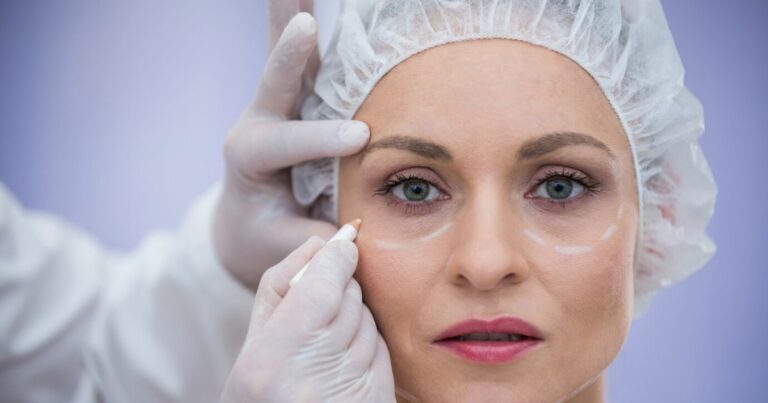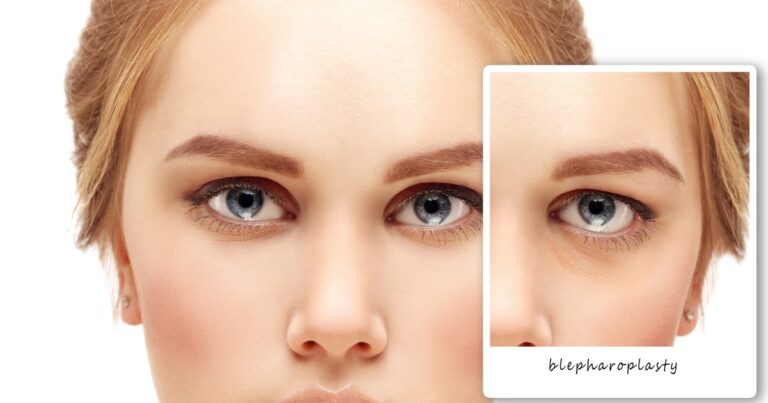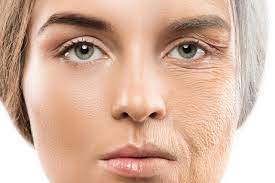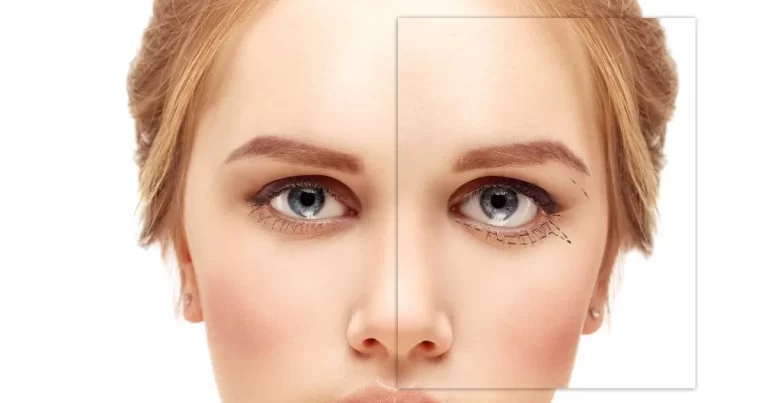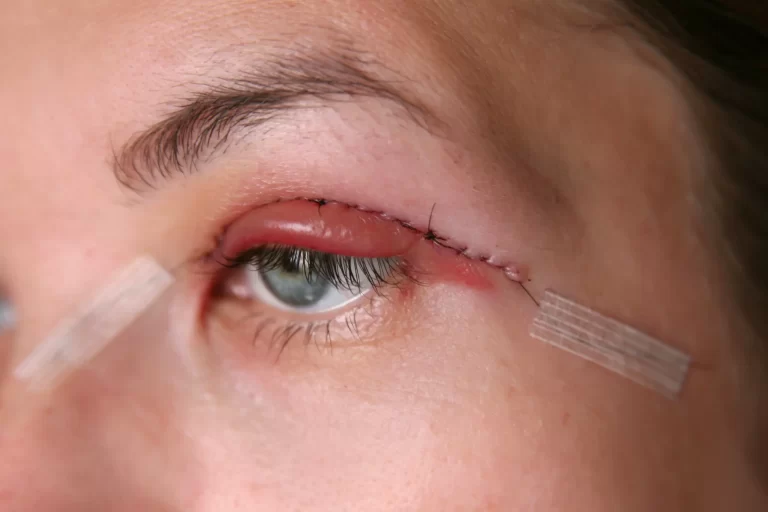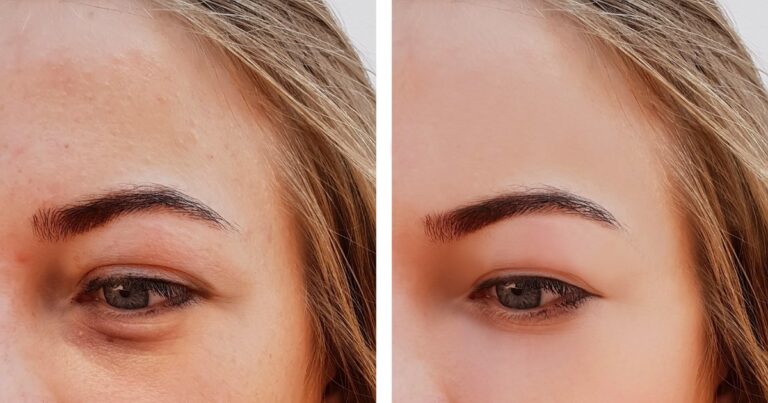Eyelid surgery, also known as blepharoplasty, is a cosmetic procedure to remove excess skin, muscle, and fat from the upper and lower eyelids. It can make your eyes appear more open, youthful, and rested. But a common question is – can eyelid surgery affect your vision?
What is the purpose of Eyelid Surgery?
Eyelid surgery is a cosmetic procedure that can give the eyes a more open, rejuvenated appearance by:
- Removing puffy bags under the eyes
- Tightening droopy upper eyelids
- Minimising fine lines and wrinkles around the eyes
During this outpatient procedure, an incision is made along the natural creases of the eyelid to access the underlying fat and muscle. The procedure typically takes 1-3 hours, depending on whether one or both eyelids are addressed.
Can Lower Eyelid Surgery Affect Your Vision?
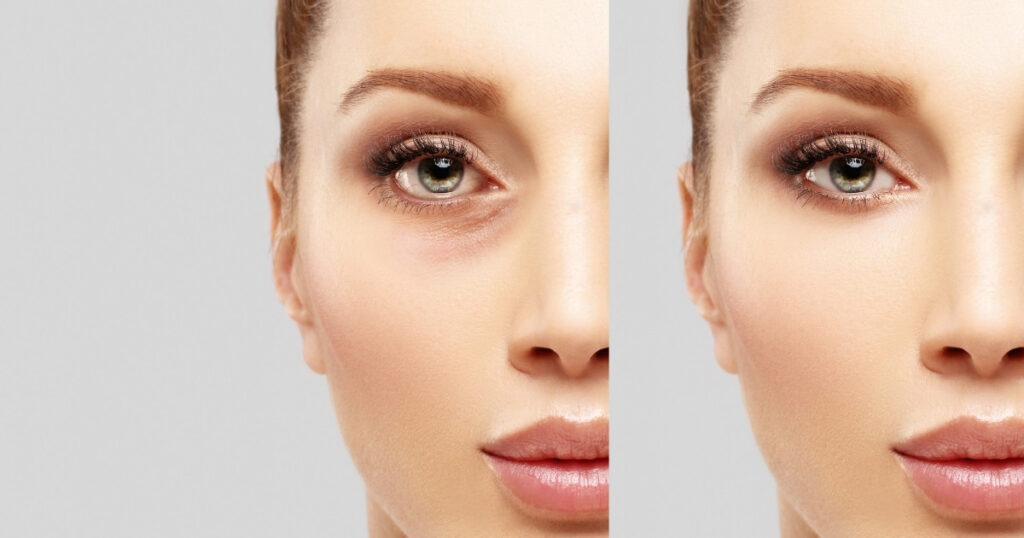
Yes, eyelid surgery can sometimes temporarily or permanently affect your vision. Here’s a more detailed look:
During Recovery
After surgery, vision may be temporarily blurred, double, or cause light sensitivity. This typically resolves within several days to weeks as the swelling subsides. Your ophthalmologist can prescribe lubricating eye drops to ease dryness and speed vision recovery.
Damage to Eye Muscles
The elevator muscle lifts your upper eyelid. The orbicularis oculi muscle closes your eyelids. If these muscles are damaged during surgery, it can cause:
Book A Consultation With Dr Tarek Bayazid
Top-rated Plastic Surgeon For Eyelid Surgery in Dubai
Installment Plan Available
- Ptosis – Drooping of the upper eyelids
- Ectropion – Turning out of the lower eyelids
- Entropion – Turning in of the eyelids
This can expose the eyes to irritation and affect vision. Further surgery may be required to fix muscle damage.
Corneal Exposure
Removing too much upper eyelid skin can result in inadequate eyelid closure. This fails to protect and lubricate the cornea of your eye. Symptoms are:
- Dry, gritty feeling in the eyes
- Blurred vision
- Recurrent corneal erosion
- Potential corneal ulceration and vision loss if untreated
Nerve Damage
The intricate network of facial nerves around the eyes controls blinking and tearing. Nerve damage during surgery can cause:
- Reduced blinking, which dries your eyes
- Reduced tear production
- An inability to fully close your eyes
Damaged nerves often recover gradually over weeks, but some impairment may be permanent.
Vision Loss
Though extremely rare, vision loss is a risk with any surgery near the eyes. Bleeding, infection and surgical mishaps can potentially result in partial or total vision loss. That’s why choosing an experienced, board-certified plastic surgeon and Oculoplastic surgeon for eyelid procedures is crucial.
Factors That Increase Your Risks
Each individual’s risks depend on factors like:
- Extent of correction needed
- Which eyelids require surgery
- Whether you have pre-existing dry eyes or vision issues
- Your surgeon’s skill and experience with eyelid procedures
Those at higher risk for vision problems include people getting:
- Simultaneous upper and lower eyelid surgery
- Repair of drooping eyelids (ptosis correction)
- Eyelid surgery, along with other procedures like a facelift
- Revision surgery to fix previous eyelid surgery
Table summarising factors affecting vision risk with eyelid surgery:
| Factor | Risk Level | Effects on Vision |
| Surgeon Experience | High risk with an inexperienced surgeon | All potential vision risks above are higher |
| Both Upper & Lower Lid Surgery | Higher risk than single eyelid | Interface issues between lids, extensive swelling and corneal exposure |
| Simultaneous Procedures | Higher with combined procedures | More swelling, nerve damage and healing issues |
| Eyelid Muscle Repair | Higher with levator muscle manipulation | Ptosis and exposure risks |
| Revision Eyelid Surgery | Much higher for redo procedures | Scarring, wound healing problems, ectropion/entropion |
| Pre-existing Dry Eyes | Higher with pre-existing issues | More irritation and blurred vision after |
| Contact Lens Wear | Higher for those who wear contacts | Difficulty wearing contacts after, dryness |
Can Vision Changes After Eyelid Surgery Be Permanent?
In the majority of cases, vision changes after blepharoplasty are temporary. As the swelling subsides and the eyes heal in the first few months after surgery, blurred vision, dryness, and light sensitivity generally improve.
However, in rare cases, patients may experience lasting vision impairment or changes after surgery:
- Double vision may signal muscle damage that can cause long-term diplopia (seeing double).
- Night blindness or impaired night vision after blepharoplasty may indicate permanent optic nerve damage.
- Blurry vision that persists months after surgery may signal corneal damage or unresolved astigmatism.
In some instances, vision changes may require corrective follow-up surgery or vision correction solutions like glasses.
Can Droopy Eyelid Surgery Affect Vision?
Eyelid surgery to correct droopy upper eyelids (ptosis repair) carries risks like blurred vision, especially if too much muscle/skin is removed. Ptosis repair may cause:
- Dry eyes or corneal damage from increased eyelid opening
- Double vision from muscle/nerve damage
- Impaired night vision from optic nerve trauma
Finding an expert surgeon is key to minimising vision issues from ptosis surgery. Be wary of discounts or deals on combo eyelid procedures.
Protecting Your Vision After Eyelid Surgery
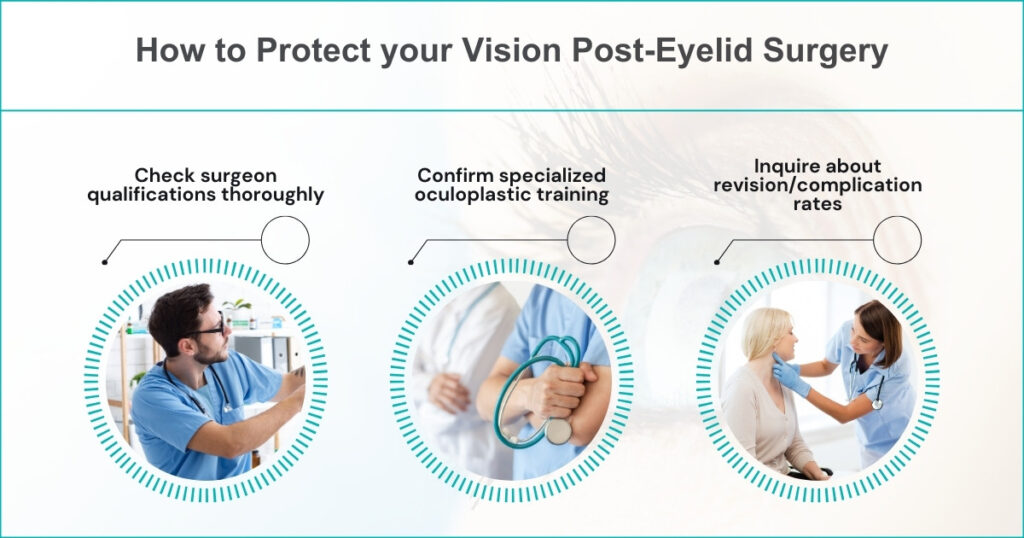
Though rare, vision issues after eyelid surgery can be distressing. Here are some tips to safeguard your sight:
Choose an Experienced, Board-Certified Surgeon
- Verify credentials and expertise in blepharoplasty
- Ensure they have specialised oculoplastic training
- Ask about their revision/complication rates
Follow Post-Op Instructions Diligently
- Use prescribed eye drops to prevent infection and dryness
- Wear goggles while sleeping to protect your eyes
- Avoid vigorous exercise, bending over, which increases swelling
Schedule Follow-Up Exams
- See your surgeon within a week to check healing
- Visit an ophthalmologist if you have any functional or vision changes
- Call your surgeon immediately if you have signs of infection
Proper patient selection, surgical technique and aftercare significantly reduce the risks of vision problems after eyelid surgery. Being informed helps identify issues early for prompt treatment.
Conclusion
Eyelid rejuvenation offers visually rewarding results. Like all operations involving delicate eye anatomy, blepharoplasty poses some risks to normal vision function. This leads to the important question: Can Eyelid Surgery Affect Your Vision?
However, when performed meticulously by a qualified oculoplastic and reconstructive surgeon, such risks remain very low. Taking proper safety measures speeds recovery, and vision returns to normal.
If sagging eyelids make you look tired or interfere with your vision, a blepharoplasty by an experienced plastic surgeon may be worth considering after carefully weighing its risks vs rewards. Understanding the potential impacts on vision is crucial in making an informed decision.
Book a Consultation with the Best Plastic Surgeon in Dubai – Dr Tarek Bayazid
Dr Tarek is renowned globally for his artistic vision, flawless surgical skills and natural-looking enhancements. Trust Dubai’s Best Plastic Surgeon for safe, customised eyelid rejuvenation tailored to refresh your eyes while optimising functional vision after surgery



